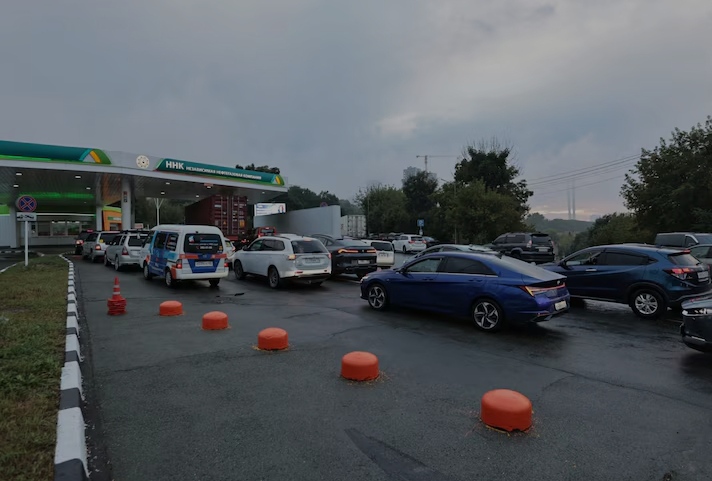Ukrainian drone strikes on Russian refineries and export terminals have triggered fuel shortages, particularly for certain gasoline grades, as refining capacity drops and high borrowing costs prevent private filling stations from stockpiling fuel, according to traders and retailers. The attacks, aimed at curbing Moscow’s export revenue and pressuring the Kremlin toward peace talks, have slashed oil refining by nearly 20% on some days and disrupted exports from major ports, raising concerns about potential cuts to oil production.


While Russia maintains a diesel surplus, its gasoline production barely meets domestic demand, making refining disruptions a risk for shortages. Popular gasoline grades like Ai 92 and Ai 95 are often unavailable, though long queues at pumps are not yet widespread. Shortages first hit Russia’s Far East and Crimea in August, later spreading to the Volga region, southern, and central Russia, according to five anonymous sources in the fuel market cited by Reuters. Gleb Nikitin, governor of Nizhni Novgorod in the Volga region, acknowledged “temporary” supply chain disruptions on Telegram, predicting a return to normalcy soon.


Privately-owned filling stations, which account for 40% of Russia’s fuel sales by volume, are hardest hit, struggling with reduced refinery output and 17% interest rates that hinder stockpiling. In contrast, stations owned by major oil companies continue normal operations. An employee at a Belgorod region station reported its temporary closure due to a lack of gasoline, noting similar issues at nearby stations. Despite enduring Western sanctions, Russia’s economy is showing signs of strain amid these challenges.




